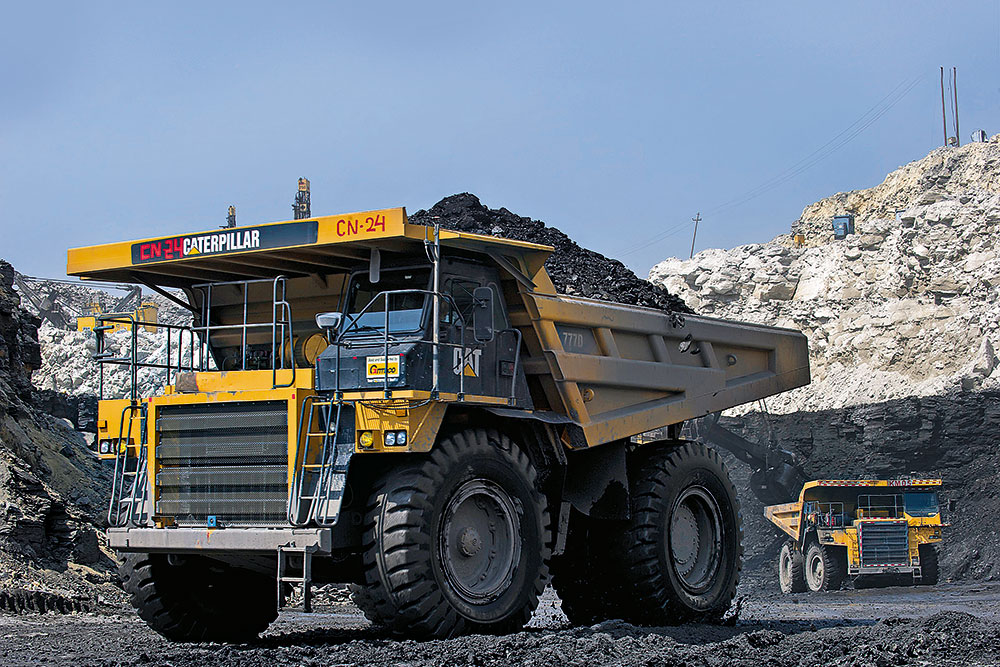Coal is dead. Long live King Coal! Although the use of fossil fuels, especially the polluting coal, received a reprieve due to the Russia-Ukraine war. Suddenly, the old plants based on it were revived, or their phase-outs were delayed, as crude oil and natural gas shortages gushed and swirled across the world. But, at the same time, Climate Change is a reality. We cannot wish it away. Soon, over the next few years, nations will substitute or completely replace coal, or there will be huge global pressures to reduce its use. As nations strive to reduce greenhouse emissions, and their impact on temperatures, India will need to switch to renewables, and in the interim, make usage of fossil fuel more efficient with lesser emission.
Even as India hikes its renewable capacity, with ambitious plans, it needs to re-strategize what to do about coal, the banished Black King of Fuel. This is for two reasons. One, India imports most of oil and gas, as it does not have adequate reserves. But it has tons and tons of coal. Two, while rich and developed nations have reached a point of saturation vis-à-vis per capita power consumption, this is not true of fast-growing ones such as India and, to a lesser extent, China. Our appetite for power will remain unsatiated for decades. Renewables will, thus, not substitute fossil fuels. And imports will be a drain on the Exchequer.
“Coal accounts for 70% of our power. The figure has remained at this level for a while, and will reduce only at a modest pace for another decade or two,” predicts CMA Partha Sarathi Bhattacharyya, former CMD, Coal India Ltd (CIL), the country’s largest state-owned and, till recently, a monopoly, coal producer. “India’s current per capita consumption is a third of the world, a fifth of China, and eighth of the developed world. Renewables cannot replace fossil fuels to meet the demand as India catches up on this metric with the rest of the world,” he adds. We will use coal for decades, even if it accounts for a lower percentage of power.

Coal production, in fact, increased by 10% annually over the past two years, and will continue to rise on the back of ongoing robust demand. This is why Indian Railways have increased their capacity to move coal. It is estimated that India’s production will zoom up by 50% to 1.5 billion tons by 2035, and will remain at those levels until 2045. Only then will it decline appreciably. This is the opposite of what will happen in the developed world, where coal demand is expected to plummet from now on. Hence, there will be intense international pressure on India to reduce coal production and consumption.
What can India do? How can we mitigate the headwinds and realise the value in using coal while mitigating the climate concerns? In CMA-speak, it connects with the optics of ‘Value Discovery’ among the CMA parameters we flesh out in the first article of this Special Issue. India can reformulate a new strategy, or re-strategize existing one, to convince the world that coal can be a less-polluting fuel. The problem, as Bhattacharyya sees it, lies in the way we use coal in a non-optimal manner. We do not wash it; most of it has impurities, and is of bad quality. This can be cleaned to reduce the impact on the environment. Indian coal moves 450 km per day on an average, along with the impurities. This implies extra fuel to move the impurities.
Why do we not wash our coal? The answer lies in legacy issues compounded by pricing distortion. “CIL realizes that washing is best global practice, and it should adopt it. But washing entails huge investments and costs. It is implementable only if consumers pay more in Rs/GCal terms for higher heat value offered by washed coal. But we do not have such pricing differential in India for the six grades of coal (G9-G14) largely used for power generation. The coal price in Rs/GCal for all these grades are flat at around Rs 245.
A sensible approach is to price the lower grades much lower than the higher grades such that the landed price in energy units (Rs/GCal) at most destinations rises as heat value moves higher. With prices remaining flat for power grade coal, there is no recovery of the capex/opex incurred to wash coal,” explains CMA Bhattacharyya. So, coal is sold with impurities. Consumers suffer perverse pricing at destination end being required to pay higher price for lower grade coal and vice versa since the transport charges and GST compensation cess are based on tonnage.
In 2007, CIL envisaged a plan to set up 20 washeries. This was mentioned in its IPO’s Red-Herring Prospectus. The rousing success of the IPO was because investors were enthused about this proactive, forward-looking plan to enhance coal quality. “If I remember, the list price of CIL’s stock was 40% higher than IPO price and, when I left as CMD, it was 50% higher,” reminisces CMA Bhattacharyya. The share price witnessed a fall as the ambitious plan for washeries fizzled out and the focus to implement it was lost. Only a few washeries were finalized.

Three reasons are responsible for the delays. First, the yield from old washing technology was 75-80%. This led to wastage, and high energy costs for producers. But today, feels Bhattacharyya, technology has improved, and guarantees 85% yield. Also, the balance 15% has hardly any heat value that makes its use worthwhile for power generation. It can be used mostly for land filling. Hence, India can adopt washing now. Second, neither CIL nor users were discerning enough to recognize the differences, or benefits of better coal quality. This mindset has changed with the entry of private power producers. Third, consumers did not demand quality. This too is no longer true.
Keeping up with the times, the silver lining came in the form of CIL’s 10-million-ton state-of-the-art washery, with a yield of 85%. Water requirement is minimal, as it is recycled, and requires a top-up. Power consumption is low. Tests show that washed coal, besides reducing ash, lowers SOx, NOx and P2.5 particulate. “This technology should be adopted in large scale over a decade to phase out use of 'as mined' coal completely,” feels Bhattacharyya.
According to CIL’s annual report (2022-23), it operates 13 washeries with a capacity of 25 million tons (mt) per year. Of these 11 are for coking coal, and two for non-coking one. Production of washed coal was just over 2 mt in 2022-23.
Last year, the state-owned coal miner commissioned a new 5 mt/year washery, with plans to set up three more to wash coking coal with a combined capacity of 7mt/year. CIL built another one for non-coking coal. In addition, a subsidiary company has planned five more washing units. However, it will be a long journey. Compare the current washing production with 695 mt of raw coal that CIL sold in 2022-23, of which 587 mt was to the power sector. CIL also needs washeries for gasification of 100 million tons of coal. Thus, investments need to escalate in the future. The right time is now.
Value discovery of this nature, whereby existing polluting fuel that everyone wants phased out is given a makeover, is crucial if India has to achieve high economic growth over the next few decades without the risk of the story getting derailed by the deepening climate concerns and reach the prosperity levels of the Western World. Post this stage all additions to renewable capacity will lead to phase out of coal fired capacity and pave the way for India to achieve Net Zero by 2070 as committed by the Prime Minister at COP26 in Glassgow.











